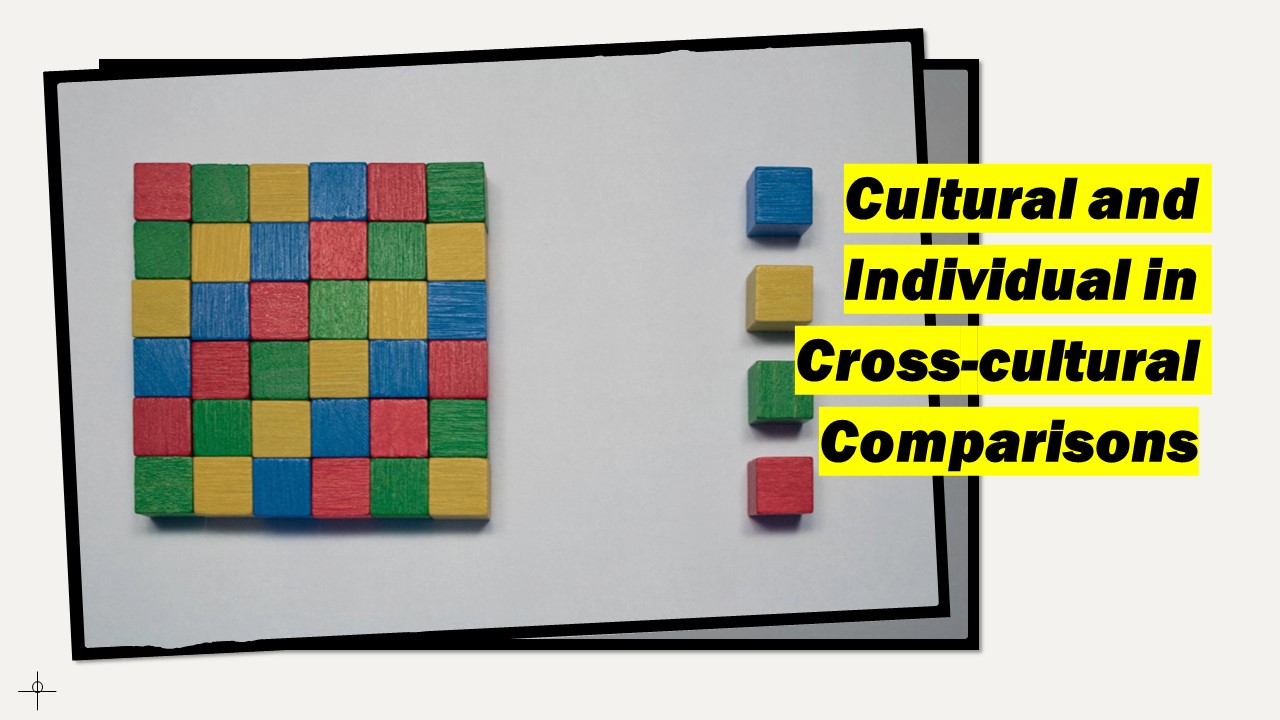Many countries around the world have a diverse population in terms of races, ethnicities, religions, languages, and historical and cultural backgrounds of the people living in their territories. So, researchers widely investigate cross-cultural comparisons.
Even though people in many countries speak a common language, many others are multilingual. Among those are Canada, Switzerland, the Netherlands, Serbia, Moldova, Zimbabwe, India, and Singapore.
Even though people in many countries share a common history, cultural heritage, and ethnicity, many others are multiethnic. Throughout history, various cultural factors have compelled them to remain together on common lands. Among those are Bolivia, Ghana, Kenya, Nigeria, South Africa, Singapore, Indonesia, India, Canada, and the United States of America.
Do National Cultures Exist?
Cross-cultural comparisons show that despite the heterogeneity in languages, ethnicities, and other cultural characteristics, many nations share a common cultural background. Their sub-cultural variations, which compose their diversity, let them have some common national attributes and live peacefully together for centuries.
Cross-cultural comparisons have demonstrated that on such cultural parameters as Power Distance, Individualism-Collectivism, Masculinity vs. Femininity, Uncertainty Avoidance, and Long-Term Orientation versus Short-Term Orientation, various in-country regions of 28 countries in the Anglo world, Latin America, Sub-Saharan Africa, Southeast and East Asia clustered homogeneously along the national lines of 28 countries. The cases when those regions intermixed between borders were relatively uncommon.
Even in Mexico and Guatemala, or Malaysia and Indonesia, in which each pair of countries has common ethnic groups, religions, and official languages, the cultural divisions were along their national borders. Even the parts of African countries that are close to each other, like Ghana, Mali, and Burkina Faso, do not mix in clusters of cultural parameters (Minkov & Hofstede, 2012).
Individual Variations Within Cultures and Cross-cultural Comparisons
While people living in countries have common national cultures and maintain the diversity of subcultures, they still substantially vary in terms of social classes and individual and typological personality traits (Karandashev, 2021). These differences can expand beyond their national and cultural resemblances.
So, what do cross-cultural comparisons of country-averages of various individual variables, such as perceptions, emotions, attitudes, traits, and beliefs, tell us about national cultural differences? I believe they tell us many things, yet we shall take them with reservations, counting on possible limitations. The average scores of individual variables at the country level can mask and even conceal the individual variety of people within a country.
Many cross-cultural studies tend to average the variables they collect from cultural samples in several countries and compare their statistical means. This way, they presumably compare cultural similarities and differences between countries. Do they? But what if a within-country variation is higher than a between-country variation?
Methodological Pitfalls of Cross-cultural Comparisons
According to some experts, individual variation in some attributes within a country can be significant, while certain categories of people between nations can be similar to each other (Minkov & Hofstede, 2012).
Research has demonstrated that within-country variations in studies often exceed between-country variations (Karandashev, 2021).
A meta-analysis of multiple cross-cultural studies comparing love emotions and love attitudes across countries, for example, revealed that cross-cultural differences are frequently minimal (if any), statistically significant in many cases, but practically too small to be meaningful and scientifically worthwhile (Karandashev, 2019).
So, a question arises: how informative for cross-cultural analysis is a comparison of the statistical means of individual variables between countries? Sometimes, these statistical measures can be mindless (Gigerenzer, 2004; 2018). The aggregation of individual variables for a country’s sample of participants should be done with care. It is important to avoid a methodological fallacy, which I call “the average body temperature of the patients in a hospital.” It appears that not all statistics in cross-cultural research are meaningful.
For example, such aggregation showed that participants from an American sample had a high average score on the personality trait of extraversion. Thus, the USA seems like an extraverted culture, despite the subcultural and individual variety of the American people. Many of them have introverted personalities.
Therefore, what is cultural and what is individual should not be confused in research. Extraversion and introversion are personality traits, not cultural ones. When we say things like “extraverted” Americans or “hot” Italians, we should keep in mind that these are metaphorical cultural stereotypes rather than literal implications.
Corrections for the statistical artefacts related to methods can be valuable for obtaining valid results in cross-cultural studies and avoiding cultural bias. A meta-analysis of 190 studies of emotions conducted from 1967 to 2000 showed that
“a correction for statistical artefacts and method-related factors reduced the observed cross-cultural effect sizes considerably.”
(Van Hemert, Poortinga, van de Vijver, 2007, p. 913)
Country-level and Individual-level Cross-cultural Comparisons
Some scholars advocate the use of multilevel analysis in cross-cultural studies. Such multilevel methodology requires researchers to examine cultural variables at both the individual and national levels as distinct but interacting variables (Fischer, & Poortinga, 2018; Smith, Fischer, Vignoles, & Bond, 2013; Van de Vijver, van Hemert, & Poortinga, 2008).
For example, it is inadequate to assume that all participants from the United States are individualistic because they live in an individualist country. Similarly, it is not adequate to think that all individuals from East Asian countries are “collectivistic” (Fischer & Poortinga, 2018). Their individualistic and collectivistic values and attitudes on an individual level can vary.
For example, such multilevel cross-cultural analysis can describe cultural factors with corresponding sets of variables (Karandashev, 2021):
- at the country level, these can be power distance, individualism of society, relational mobility, or context differentiation.
- at the individual level, these can be personality traits, intensity, prevalent emotional valence, expressivity, or idiocentrism (psychological variable of individualism).
Thus, it is important to differentiate between cultural and individual variables. We shall recognize what is cultural and what is individual in a culture and treat them separately in research, even though we shall acknowledge that culture affects individual differences among people. American culture can certainly determine the prevalence of extraverted or introverted personalities in a society by their selective promotion or another way.
